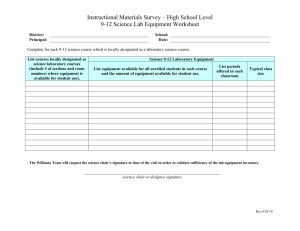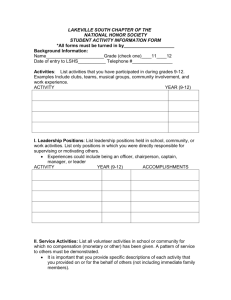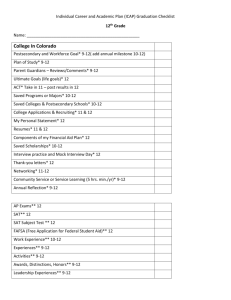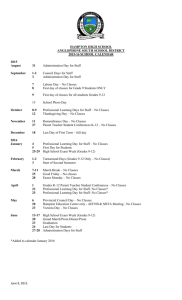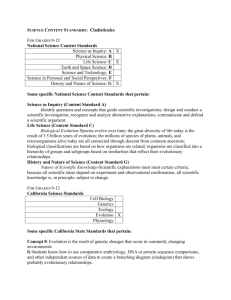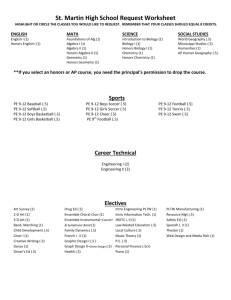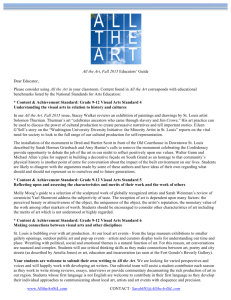Curriculum - West Ada School District
advertisement
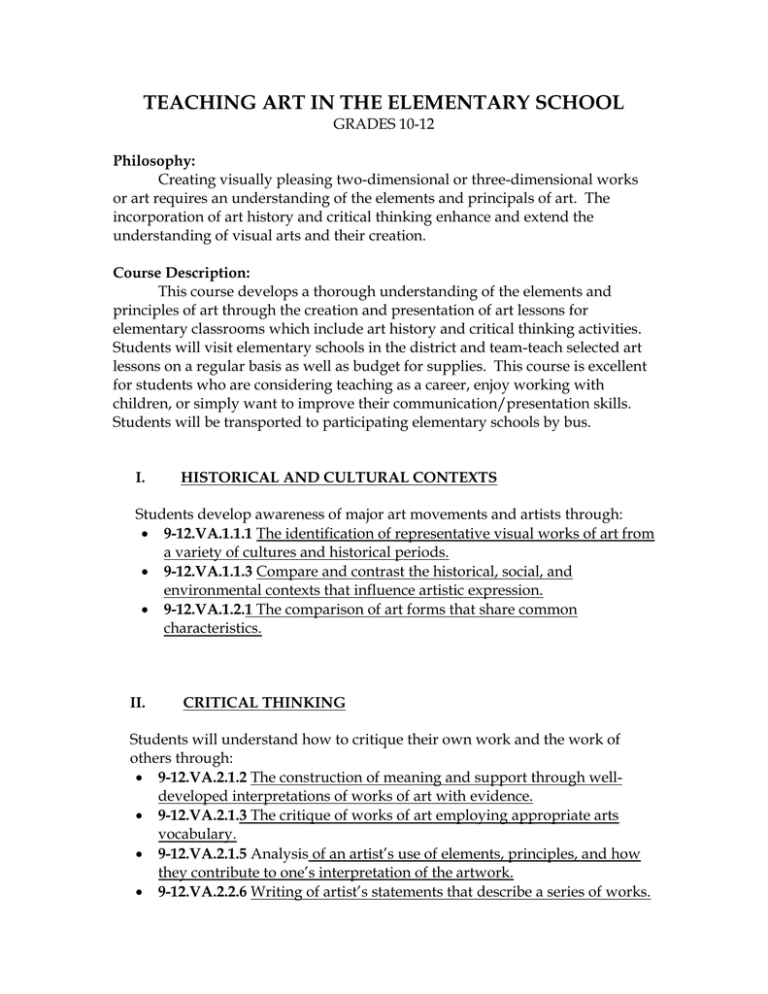
TEACHING ART IN THE ELEMENTARY SCHOOL GRADES 10-12 Philosophy: Creating visually pleasing two-dimensional or three-dimensional works or art requires an understanding of the elements and principals of art. The incorporation of art history and critical thinking enhance and extend the understanding of visual arts and their creation. Course Description: This course develops a thorough understanding of the elements and principles of art through the creation and presentation of art lessons for elementary classrooms which include art history and critical thinking activities. Students will visit elementary schools in the district and team-teach selected art lessons on a regular basis as well as budget for supplies. This course is excellent for students who are considering teaching as a career, enjoy working with children, or simply want to improve their communication/presentation skills. Students will be transported to participating elementary schools by bus. I. HISTORICAL AND CULTURAL CONTEXTS Students develop awareness of major art movements and artists through: 9-12.VA.1.1.1 The identification of representative visual works of art from a variety of cultures and historical periods. 9-12.VA.1.1.3 Compare and contrast the historical, social, and environmental contexts that influence artistic expression. 9-12.VA.1.2.1 The comparison of art forms that share common characteristics. II. CRITICAL THINKING Students will understand how to critique their own work and the work of others through: 9-12.VA.2.1.2 The construction of meaning and support through welldeveloped interpretations of works of art with evidence. 9-12.VA.2.1.3 The critique of works of art employing appropriate arts vocabulary. 9-12.VA.2.1.5 Analysis of an artist’s use of elements, principles, and how they contribute to one’s interpretation of the artwork. 9-12.VA.2.2.6 Writing of artist’s statements that describe a series of works. III. PERFORMANCE Students will use a variety of art materials applying the elements and principles of design, art history and critical thinking to create successful lessons for elementary classrooms. Media used (any of the following): colored pencil, pen and ink, collage, printing materials, watercolor, pastels, and markers. 9-12.V.A.3.1.1 Select and apply media, techniques, and processes effectively and with artistic intention. 9-12.V.A.3.1.2 Demonstrate safe and proper use, care, and storage of media, materials, and equipment. 9-12.V.A.3.1.3 Demonstrate how the elements and principles can be used to solve specific visual arts problems. Assessment: Students will demonstrate competency applying the elements and principles of design, knowledge of art history and critical thinking skills in the design of lesson plans for elementary classrooms. 9-12.V.A.3.1.1 Select and apply media, techniques, and processes effectively and with artistic intention. 9-12.V.A.3.1.2 Demonstrate how the elements and principles can be used to solve specific visual arts problems. a. Elements: line, value, shape, color, texture, form, and space b. Principles: balance, emphasis, movement, unity, contrast, and harmony. IV. VOCATIONAL Students will identify the role of the arts in today’s society, including career and avocation opportunities. 9-12.V.A.2.2.1 Identify the role of the arts in today's society, including career and avocation opportunities.
